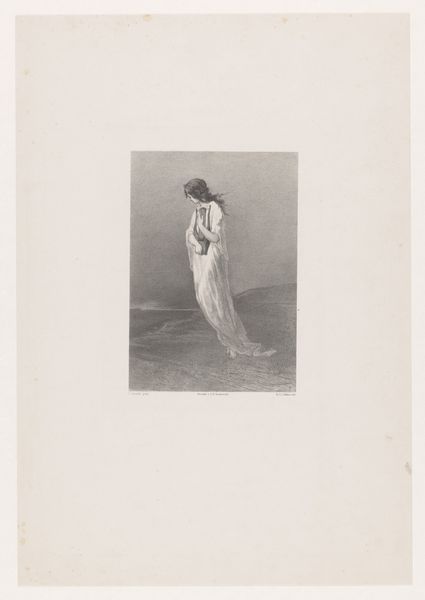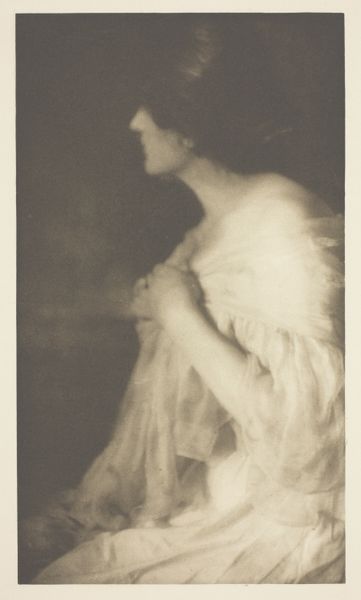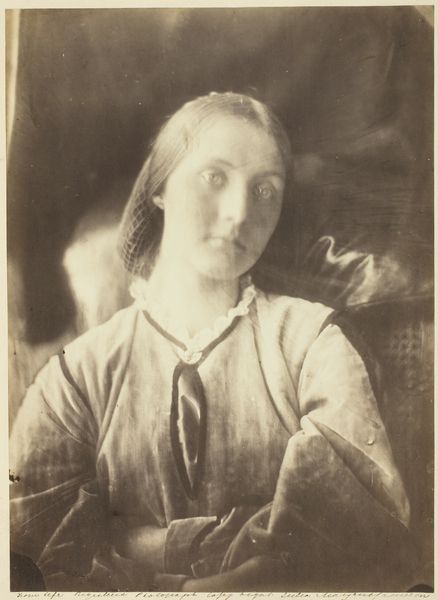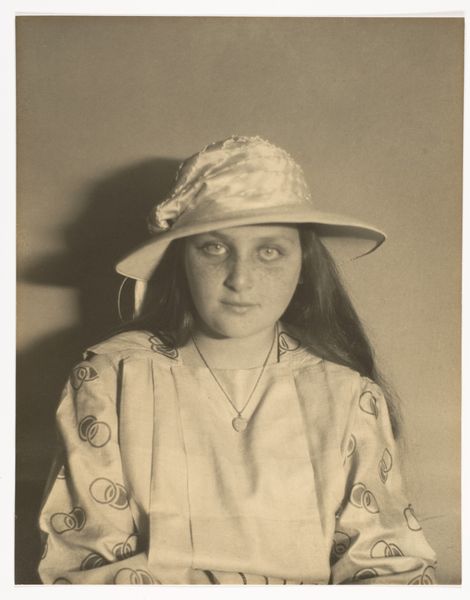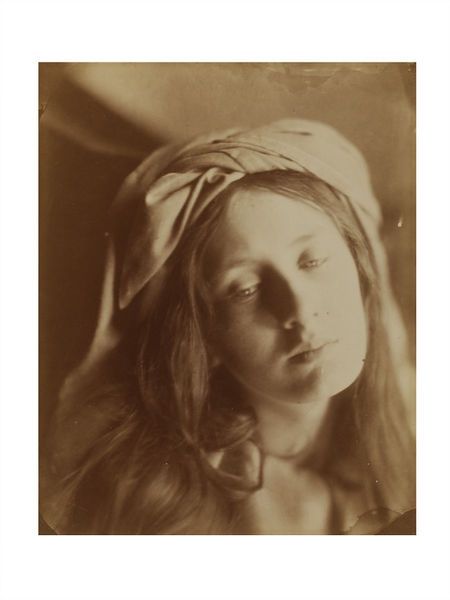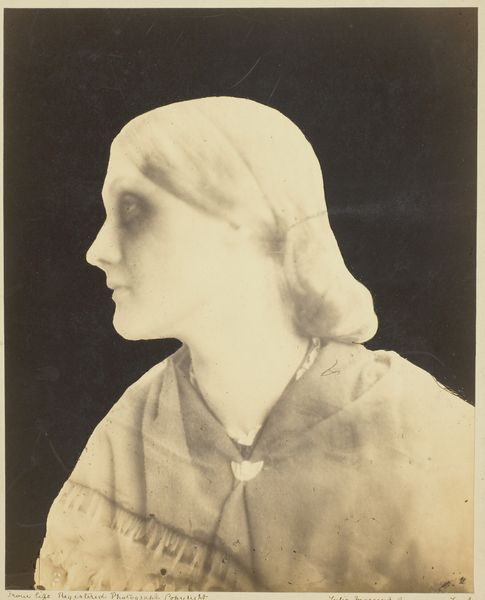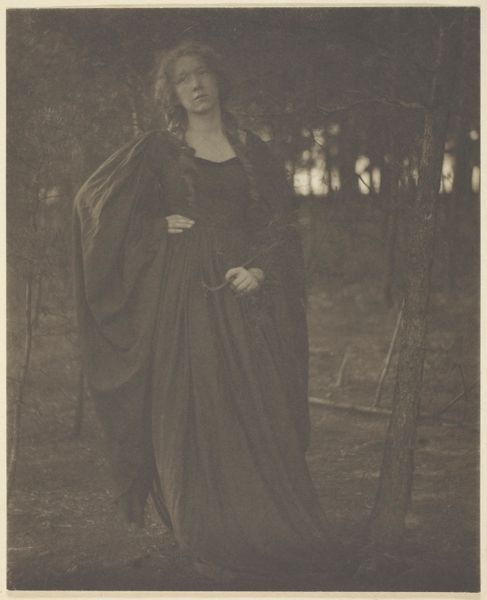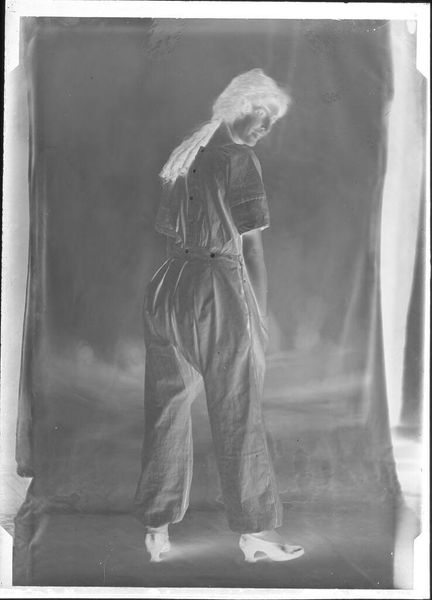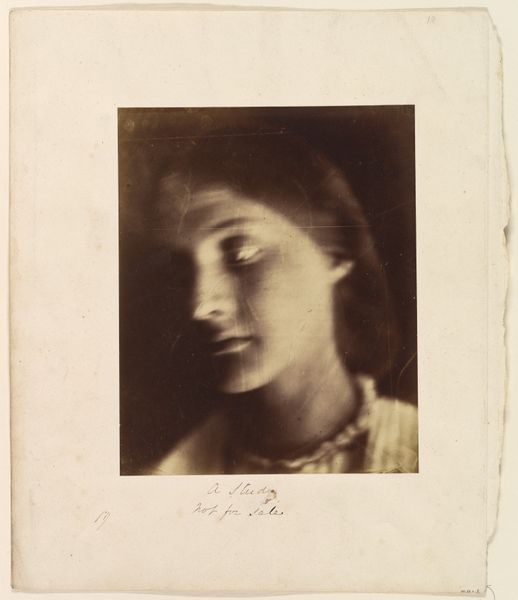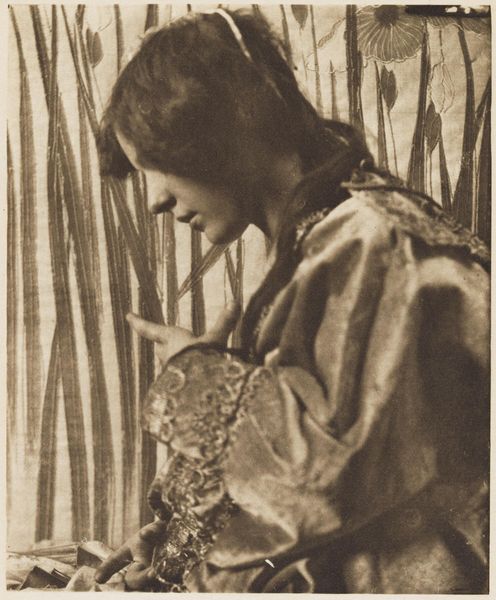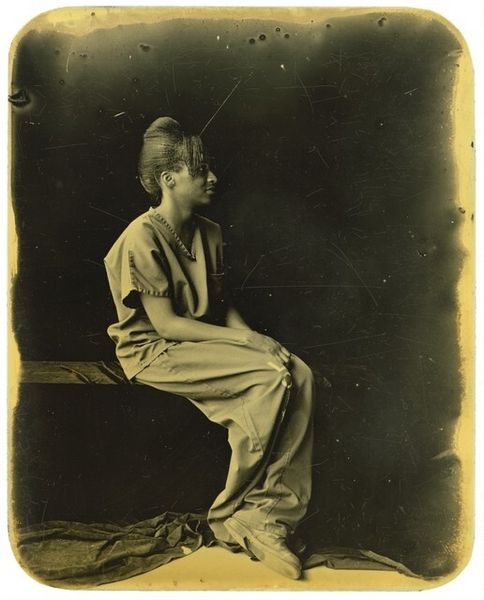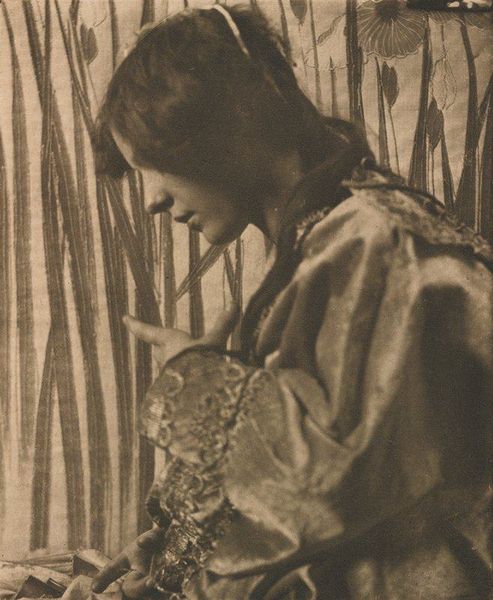
photography, gelatin-silver-print
#
portrait
#
film photography
#
photography
#
gelatin-silver-print
#
symbolism
#
portrait photography
Copyright: Public Domain
Editor: This gelatin-silver print, titled "Jeanne," was taken in 1917 by Morton Schamberg. The girl’s gaze is directed downwards, giving the work a somber tone. What can you tell me about it? Curator: This image speaks volumes about the changing social status of women at the time, wouldn’t you agree? Schamberg's "Jeanne," created during the tumultuous years of World War I, depicts a young girl on the cusp of adulthood. Her downward gaze could symbolize the weight of societal expectations and the limitations placed upon women during that era. Editor: I never thought of it that way. I was just considering it from a visual perspective. Curator: The soft focus and delicate lighting evoke a sense of vulnerability and introspection. The shadow looming behind her becomes almost another figure present within the photograph. The First World War impacted the traditional patriarchal family structures of Europe, didn’t it? Women entered into industrial production more intensely, stepping into labor usually assigned to men. Considering this shift, what could Jeanne’s modest garment with geometric decorations say about that? Editor: It looks like she could be working class, rather than from a privileged background? Her dress appears functional. Curator: Exactly. And beyond the immediate composition, we need to situate Schamberg within the broader cultural movements of the time. While he had ties to the avant-garde, particularly Dada, "Jeanne" also nods to pictorialism with its focus on atmosphere and emotional impact. It urges us to question conventional representation and to acknowledge the power dynamics inherent in portraiture. This isn't just a picture of a girl; it's a statement about identity, agency, and the female experience in a rapidly changing world. What have you taken from this conversation, reflecting back on that original impression of yours? Editor: Now I see so much more! I still notice the somber mood, but I also appreciate that the portrait embodies this interesting tension, between her being an individual and also the representation of many historical phenomena. Curator: I couldn't have said it better myself.
Comments
No comments
Be the first to comment and join the conversation on the ultimate creative platform.
